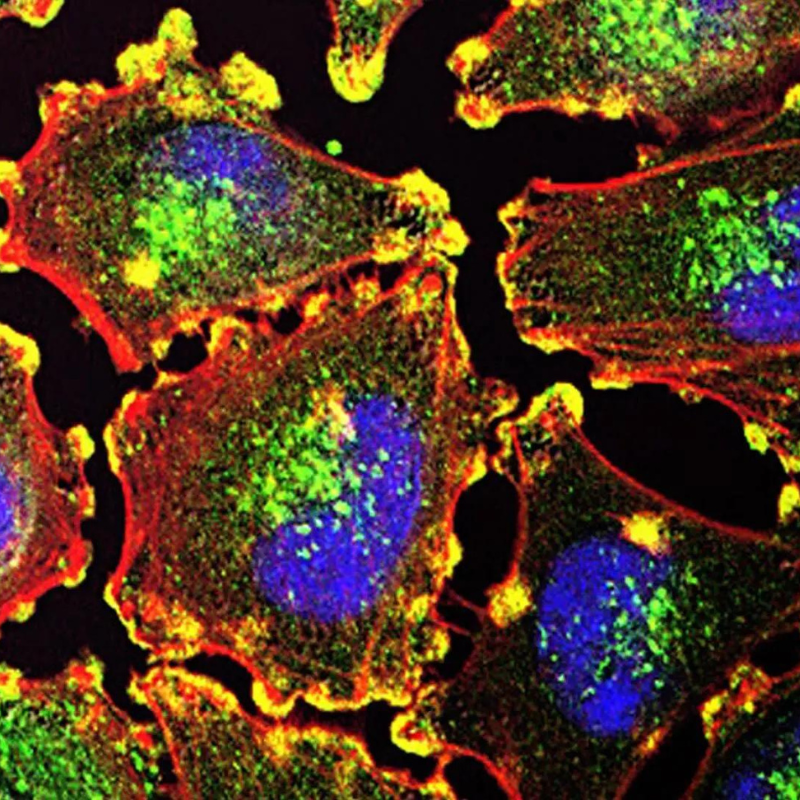UMD Researchers Pioneer Improved Photoimmunotherapy Treatment Against Metastatic Cancer
A team of researchers from the Fischell Department of Bioengineering (BIOE) at the University of Maryland has made new strides in the fight against metastatic cancer, for the first time successfully combining three cutting-edge photoimmunotherapy technologies to help prevent the spread and return of the disease, while minimizing illness and other familiar side effects of cancer treatment. The study, published in Science Advances, is a collaboration between the University of Maryland and Modulight, a designer and manufacturer of lasers for medical application. Using mouse models, the team studied advanced forms of the deadly disease, which in humans has an average five-year survival rate of less than 30%—a statistic that has not changed significantly in the past 30 years. Many patients relapse due to residual lesions smaller than a millimeter that remain after initial treatments. These micrometastases are difficult to detect, often develop resistance to standard treatments, and are the root cause of metastatic cancer. A rising method of treatment, photoimmunotherapy targets cancer cells with microscopic, nano-engineered cancer drugs that are activated at the site of lesions using laser light. But because of widely varying responses to the treatment from person to person, the treatment often relies on trial-and-error drug delivery, and moreover, no method can readily monitor whether the drugs were delivered effectively or had the desired therapeutic effect. As the UMD–Modulight study demonstrates, a combination of targeted “photo(nano)medicine,” imaging, and monitoring of treatment responses could in the future overcome these challenges, achieving better treatment outcomes and predicting tumor response. “Patients undergoing cancer treatment exhibit varying tolerances and individualized responses. Through continuous monitoring of their progress, we can promptly determine if treatment adjustments are needed while they are actively receiving care," said study leader Huang Chiao Huang, Associate Professor of bioengineering. "There is no need to postpone decisions until the next scheduled session,” . The approach relies on the combination of three advanced technologies to improve treatment outcomes.
“This approach ensures that the treatment remains both effective and uniform,” said Huang, who leads the Optical Therapeutics & Nanotechnology Laboratory. “This process is repeated as necessary for each patient, resulting in a personalized dosage tailored to maximize treatment effectiveness within a single session.” When these three technologies are combined and applied in mouse models with peritoneal carcinomatosis—a type of cancer that can be caused by spreading ovarian cancer—the research team observed remarkable improvements. The TPMAL system enhances drug delivery to metastatic tumors, while sparing normal tissues. Furthermore, the ML7710 system monitors the TPMAL drug in real time and customizes light dosimetry for each patient. The research team is working to establish a comprehensive panel of biomarkers that would allow doctors to promptly determine the optimal dosage for each patient during a treatment session. “The goal is to minimize the number of treatment cycles required while minimizing burden on the patient's body, in contrast to conventional treatment approaches,” Huang said. Other authors of the study included BIOE graduate students Barry J. Liang, Sumiao Pang, Chen-Hua Ma, Brandon Gaitan, Aaron J. Sorrin and Idrisa Rahman; BIOE postdoctoral associate Payal Srivastava; BIOE undergraduate Nada Fadul ’24; and Dana M. Roque, an associate professor of obstetrics, gynecology and reproductive sciences at the University of Maryland School of Medicine at the University of Maryland, Baltimore.
Related Articles: October 25, 2023 Prev Next |
|


